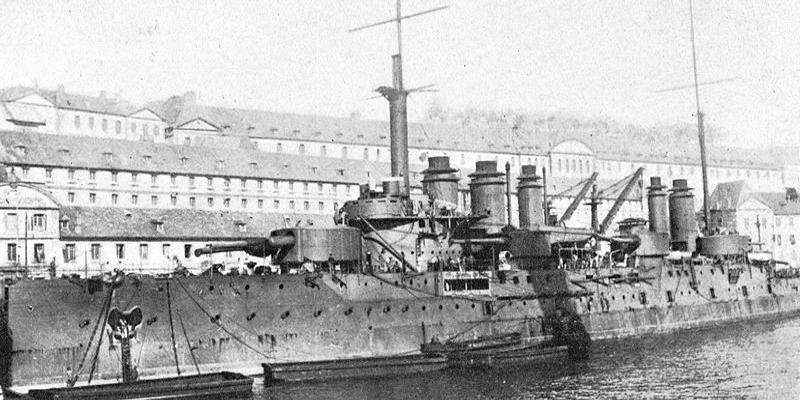A French battleship sunk in 1917 by a German submarine has been discovered in remarkable condition on the floor of the Mediterranean Sea.
The Danton, with many of its gun turrets still intact, is sitting upright in over 1,000m of water.
It was found by the Fugro geosciences company during a survey for a gas pipeline between Algeria and Italy.
The Danton, which sank with 296 sailors still onboard, lies 35km southwest of the island of Sardinia.
Naval historians record that the Danton’s Captain Delage stood on the bridge with his officers and made no attempt to leave the ship as it went down.
The French government is now keen to see that the site is protected.“Its condition is extraordinary,” said Rob Hawkins, project director with Fugro GeoConsulting Limited.
Despite tumbling through the water, many guns stayed in place"After it was hit by the torpedoes, the Danton clearly turned turtle and rotated several times. You can see where it dropped some infrastructure on the way down and then impacted on the seabed.
“You can see where it slid along the seabed before coming to a rest,” he told BBC News.
A comparison with the original plans for the battleship - in particular, the position of its 240mm guns - confirms the wreck’s identity.
The final resting place is a few kilometres from where people have traditionally thought the ship met its end.
The wreck is just off the point where the southern pipeline meets Sardina“The French Admiralty did argue with us for a while that it should have been several nautical miles away, but we reminded them that modern GPS methods are more accurate than the sextants they used in those days,” said Mr Hawkins.
Details of the discovery were released on Thursday at a press conference at the Museum of Science and Technology in Milan.
The pipeline is being built by the Galsi (Gasdotto Algeria Sardegna Italia) consortium and will be the deepest underwater conduit for gas ever constructed when it becomes operational in 2012.
Finding a safe route for it was extremely challenging, said Mr Hawkins.About 20% of the course lies on the abyssal plain in water depths of about 2,850m. There are also steep descents from the continental shelf.
The Danton was carrying over 1,000 men at the timeFugro deployed its Autonomous Underwater Vehicle to gather bathymetric (depth) and geophysical data.
It also used Remotely Operated Vehicles to make more detailed surveys of particular locations, such as where sediment conditions were uncertain or the route crossed known submarine telecommunications cables.
Analysis of the Danton’s debris field suggests the battleship landed at the bed from the northwest.
As a consequence, a decision was taken to offset the 66cm-diameter pipeline by 300m to the southeast of the wreck location, thus avoiding any obvious structural items that had fallen clear of the vessel during its descent and forward of any sediment kicked up in the bed impact.
She was one of the largest French naval vessels of her eraThe ship, named after the French revolutionary Georges Danton, was less than 10 years old at the time of its loss, but already outclassed by the newer HMS Dreadnought design being introduced by the British.
The 19,000-tonne, 150m-long vessel was carrying over 1,000 men when it was attacked by Germany’s U-64 submarine at 1317 on 18 March, 1917. Patrol boats and a destroyer managed to save most of those onboard.
The Danton was travelling between Toulon and Corfu, where it was due to meet up with other vessels in the French fleet. Many of those making the trip were actually crewmembers for the other ships at Corfu.
[source](http://news.bbc.co.uk/2/hi/science/nature/7898890.stm) includes photos and underwater vid

